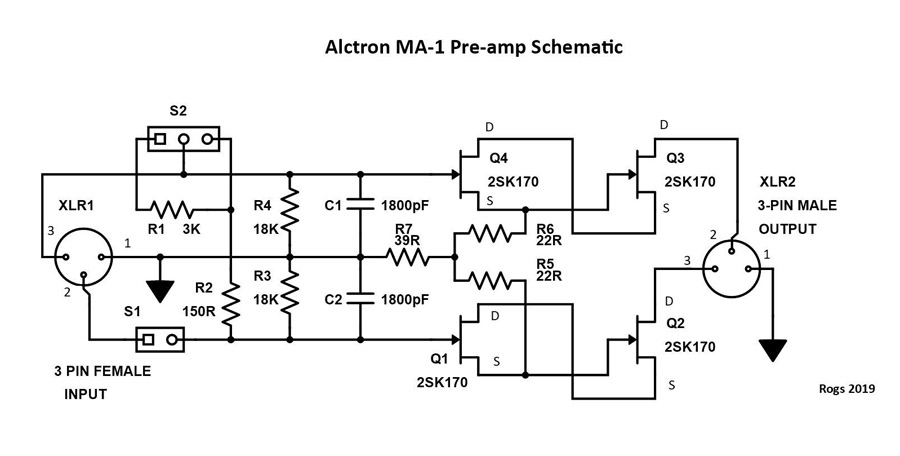Hi,
in this thread about active ribbons the user whoops opened a triton audio fethead and posted the schematic.
Since i had some 2SK170BL laying around, i matched some resistors and put them on a stripboard. Please be aware of the bend transistor pins!
!!! This is the corrected version after Reply #1 !!!

The preamp is working but it has more noise than i expected. It might be a problem of my Audio Interface Phantom Power. I made a comparison with two MD 421, one connected by the triton and one directly to the interface. Phantom power is applied to both channels. The noise on the channel without the triton raises when p48 is activated so i guess its part of the noise problem. How could i easily improve the schematic with phantom power filtering? Or is it only possible on the injection side?
in this thread about active ribbons the user whoops opened a triton audio fethead and posted the schematic.
Since i had some 2SK170BL laying around, i matched some resistors and put them on a stripboard. Please be aware of the bend transistor pins!
!!! This is the corrected version after Reply #1 !!!
The preamp is working but it has more noise than i expected. It might be a problem of my Audio Interface Phantom Power. I made a comparison with two MD 421, one connected by the triton and one directly to the interface. Phantom power is applied to both channels. The noise on the channel without the triton raises when p48 is activated so i guess its part of the noise problem. How could i easily improve the schematic with phantom power filtering? Or is it only possible on the injection side?




![Electronics Soldering Iron Kit, [Upgraded] Soldering Iron 110V 90W LCD Digital Portable Soldering Kit 180-480℃(356-896℉), Welding Tool with ON/OFF Switch, Auto-sleep, Thermostatic Design](https://m.media-amazon.com/images/I/41gRDnlyfJS._SL500_.jpg)





























